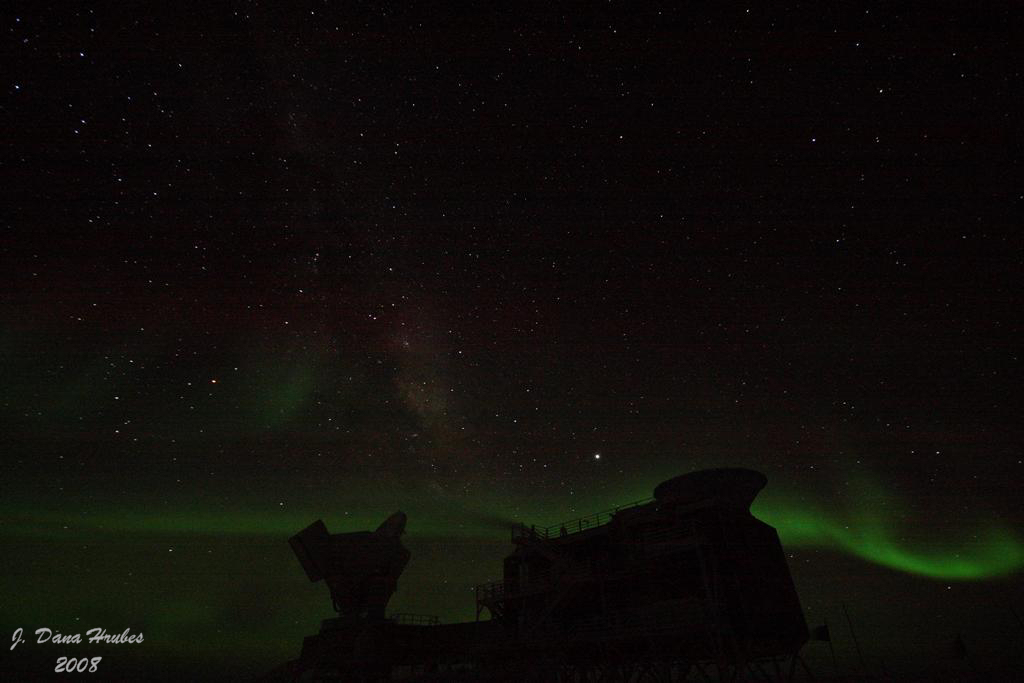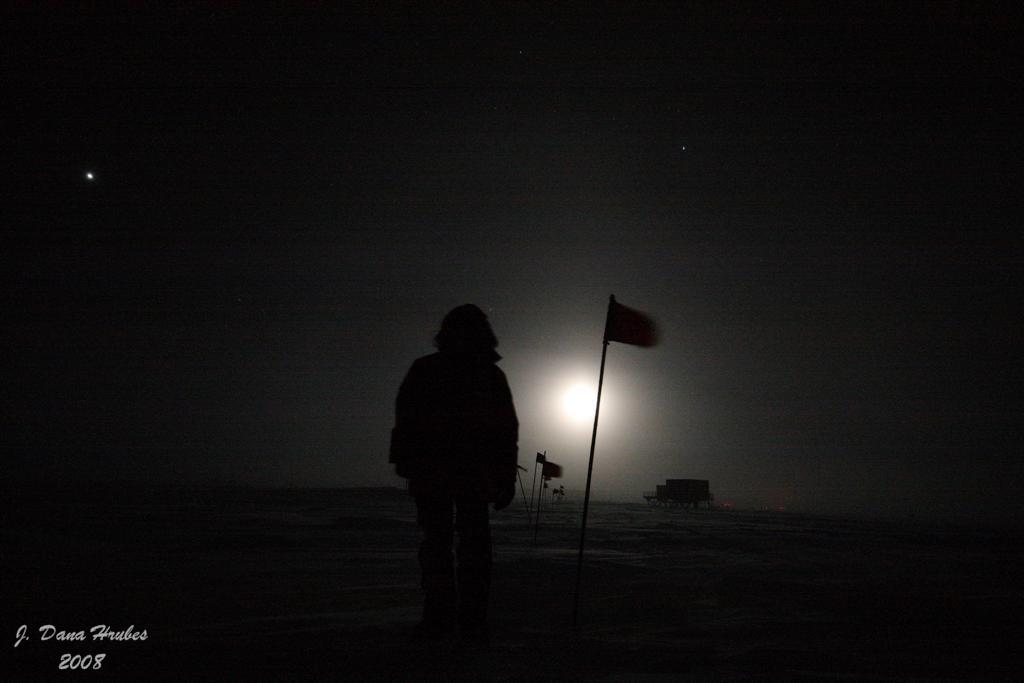
South Pole Telescope (SPT), the BICEP telescope and the Dark Sector Lab (DSL) back lit by aurora Australis

South Pole Telescope (SPT), the BICEP telescope and the Dark Sector Lab (DSL) back
lit by aurora Australis

A Real-Time Photo of South Pole Station as Seen
from the ARO
Building (live when satellite is up) MY
SOUTH
POLE 2007-08 HOME PAGE
A
Comprehensive
South Pole Web Site by Bill Spindler
Winterover
Web
Pages
(Bill Spindler's List)